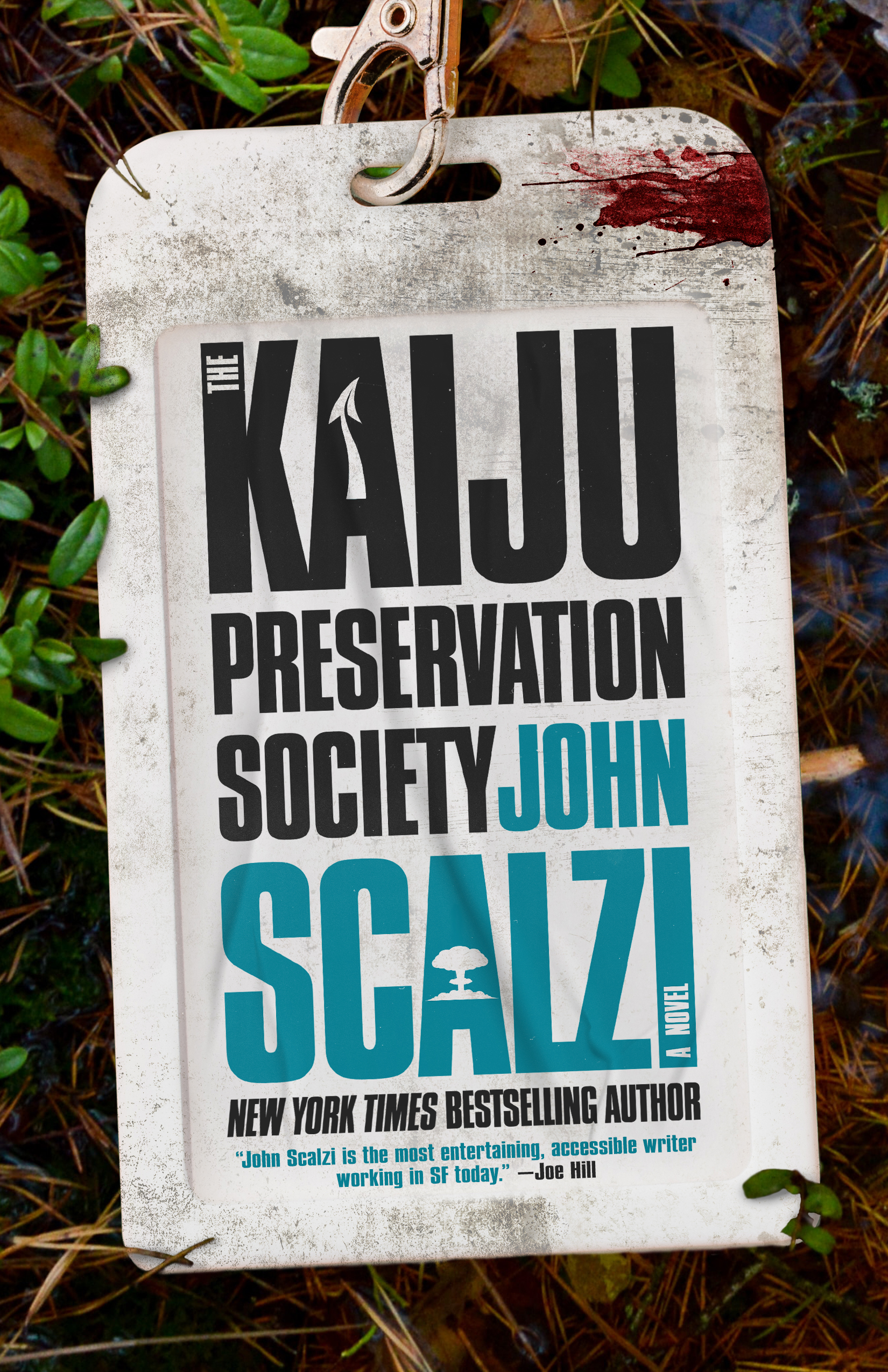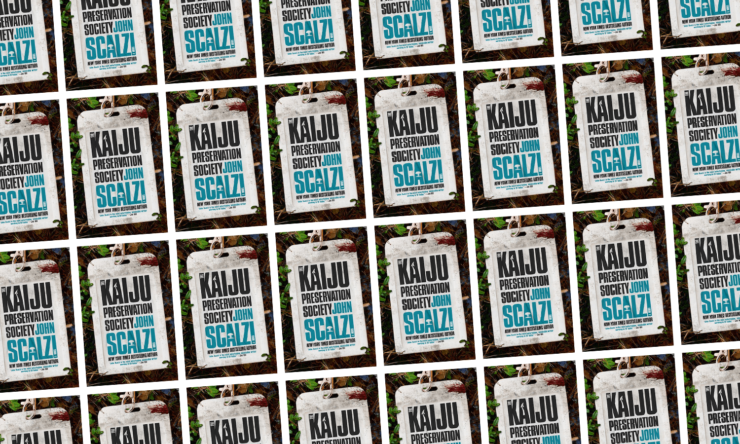We’re in a fascinating moment.
In past eras someone like Dante Alighieri would throw real life famous (and infamous) people into Hell, and trust that his readers would know them; John Milton could fill his poems with characters from every page of the Hebrew Bible; Neil Gaiman could fill The Sandman with both historical figures AND the superheroic pantheon of DC (who were, after all, real in the world of The Sandman) and trust that his readers would get at least some of each strand of reference. But this was for the reader, a little bit of spot-the-reference scattered across a narrative so that people could feel that particular fizz of recognition that comes with being part of a club.
I’d estimate about 20 years ago now it became normal for creators to acknowledge the pop culture that was informing the thing you were currently reading or watching. In Jurassic World, park worker Lowery Cruthers has a classic Jurassic Park shirt and a bunch of dinos on his desk—in his world the Tragic Events of Jurassic Park are part of history, but his merch all looks like stuff we can own in our world, because he’s also kind of the audience proxy, and we get a different fizz of recognition from seeing him with our merch. Jimmy Buffet cameos as himself running out of a Margaritaville outpost, frozen drinks in hand, because of course there’d be a Margaritaville outpost at the shiny new Jurassic Park, and of course Jimmy Buffet would actually be vacationing there.
We’ve hit a point in nerd shit where the characters in the book have seen all the movies, read all the comics, slumped in front of various gaming consoles for entire weekends. Fictional characters—they’re just like us! In John Scalzi’s latest novel, The Kaiju Preservation Society, we meet a cast of characters who have seen Godzilla (the good version, not just the Raymond Burr edit) and Jurassic Park, played Doom, read Neal Stephenson, and spent lots of time doomscrolling Twitter. The book begins in New York—our New York, just as COVID-19 is about to swamp the city. Jamie Gray is working for a delivery startup called füdmüd, and the way we’re clued into the fact that her boss is terrible is that he thinks he coined the term “Deliverator”. When Jamie tries to correct him he dismisses her, despite the fact that she wrote her master’s thesis on science fictional dystopias. And I mean he literally dismisses her, and soon she’s facing the pandemic as an unemployed academic dropout who’s down to her last two equally-broke roommates.
Which is where the gig with the Kaiju Preservation Society comes in.
Without spoiling anything: Jamie Gray joins a super secret organization dedicated to the preservation of kaiju. You might ask—what the hell can a kaiju need preserving from? Over the course of the book Scalzi shows us some of the dangers these creatures face, which include their own panda-like lack of mating initiative, and, obviously, humans. Along the way Jamie becomes part of a team of people, mostly scientists, who hail from a bunch of different cultural backgrounds (Aparna [Biology], Kahurangi [O Chem and geology], and Niamh [astronomy and physics]) but all trade in the wit and inside jokes that make Scalzi’s books so much fun. But the larger joy of reading the book is the feeling of being embedded in the team, and following along on both their “normal” workdays—which are still pretty extraordinary because freaking KAIJU—and the far more dangerous plot that kicks into gear halfway through the book.
Buy the Book


The Kaiju Preservation Society
In Scalzi’s world, you can spot an asshole because not only do they not get the sci-fi references, but they’re not willing to shut up and be educated by the nerds around them. On the other hand, sometimes you get lucky and find yourself surrounded not just by nerds, but by GOOD nerds. In Jamie’s case, joining the KPS means that she’s part of a team of people who have advanced scientific degrees, but who respect her work in the humanities (and more important, respect her as a person) who are all working together to protect terrifying beasts. Not because those beasts turn out to be cuddly or useful to humanity, but simply because everyone’s committed to the idea that the kaiju have a right to live their lives in their environment without being hunted or exploited.
I am a person who loves animals, but I love animals because I know I am one. I don’t expect a cat to act like a fish, or either of them to act like a bonobo, or for any of those three to act like a human. And one of the best things about the KPS, both as a book and as a fictional organization, is that neither Scalzi nor any of his characters expect the kaiju to be anything other than what they are. The kaiju are the size of mountains. Some of them fly. They don’t really clock the tiny humans that occasionally fly helicopters near them—those humans are not even as large as the symbiotic parasites that swarm their skin, so why would they? And as for the other creatures that live on the jungle floor? Humans are food that they are, in fact, always in the mood for. One of the best setpieces in a book full of them is the moment Jamie gets to encounter life on the ground, and comes face-to-face with just how small and edible she actually is…but also how important it is for her to remember that in order to help keep her team safe.
Which leads me to the thing I liked most about this book, which is that it’s beyond competence porn, it’s sort of support network porn? Once Jamie gets free of her terrible Large Adult Son of a boss, she is embraced by her KPS team. Most of them are scientists, and she keeps noticing that she might be the only one lacking a doctorate, but it doesn’t matter. They respect her, and listen to her ideas even though she’s “just a grunt”. In fact everyone on the team listens to everyone else, from Base Commander Brynn MacDonald to the helicopter pilots to the geologists. They tease each other relentlessly, but all of the jokes are built on a foundation of assuming the best about each other. Everyone trusts everyone else to work hard, to do their best. The Kaiju Preservation Society is “Good Faith Argument: The Book.” And holy shit is that refreshing and fun to read, especially after the last few years. But more than being a fun conceit, this aspect of the book sets the central conflict up perfectly, because when there are problems they stem from people who act in bad faith.
A point that’s made repeatedly is that the kaiju are part of an ecosystem, and they are themselves an ecosystem. Crawling with parasites that seem gross on first blush, but provide vital, if unconscious, services to their hosts. The kaiju themselves can only thrive in their world’s environment, and their biology and habits are a core component of their ecosystem. In the same way, the KPS are an ecosystem. Each team member fulfills specific roles, but everyone is also allowed to stretch and grow beyond those roles. They work with each other and hear each other out—and they do that while wrangling enormous monsters and evading giant insects and doing science and providing readers with a fantastic time in another world.
The Kaiju Preservation Society is published by Tor Books.
Get a taste of the novel with the Society’s Workplace Guidelines for new recruits.










